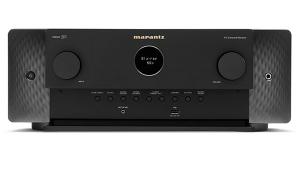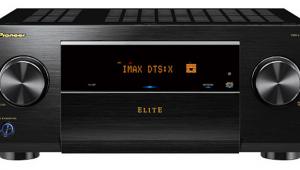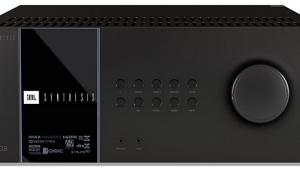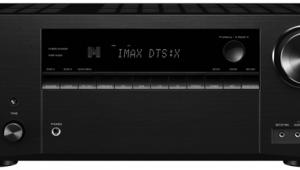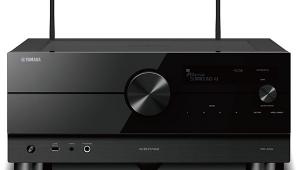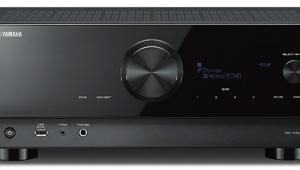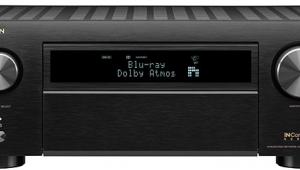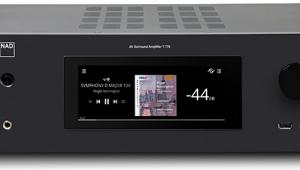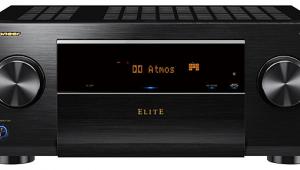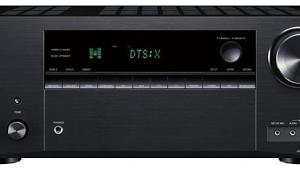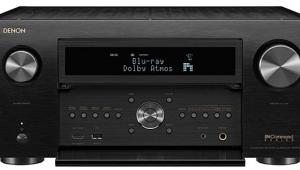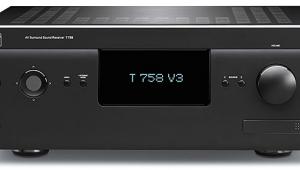Yamaha Aventage RX-A1000 A/V Receiver
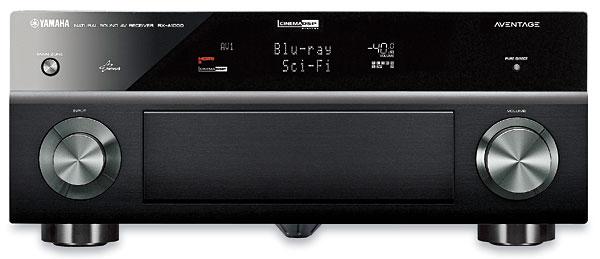
It must have been a dream. Suddenly, I found myself living in a world where young people were rediscovering vinyl, jazzing up their iPods with audiophile earbuds, and even experimenting with tube amps. LP sections in record stores came back from the dead, steadily enlarging and proliferating. The once ridiculously overpriced CD suddenly became a bargain in wallet-box anthologies and affordable reissues. High-performance, high-value speakers became available over the Internet. I never wanted to wake up—until I realized I hadn’t really been asleep in the first place. All of this stuff is actually happening. We’re living in a new golden age of audiophilia, vibrant with lovingly excavated ideas and manic energy. An increasing number of people care about good sound again.
Some of those people work for Yamaha. Its parent company has a musical instrument division, so you could argue that they never stopped caring about good sound. But like nearly all A/V receiver manufacturers, Yamaha got caught up in the features race. That started to change last year when Yamaha announced the Aventage series of AVRs. What the Prime Directive was for Captain Kirk—a core principle that could be ignored only at his peril, with much furrowing of Mr. Spock’s brow—sound quality became for the designers of these audiophile AVRs. And by the way, if you call audiophile A/V receiver a contradiction in terms, I’ll come over there and smack you.
Lofty View
The RX-A1000 is the middle kid in Aventage’s family of five. It’s also my second foray into the
line, following a review of the step-up RX-A2000, which appeared in HT’s January 2011 issue. One of the few things that inaugural review omitted was a detailed overview of the series. Let’s start there.
Aventage is one of four Yamaha A/V receiver lines. The others include the mainstream RX-V Series, which is the largest, with 13 models. There’s also the value-oriented HTR series, with three models.
The five Aventage models range in price from $650 to $1,900. In ascending order of rated power, they offer 90, 95, 105, 130, or 140 watts RMS times seven channels. As always, I encourage you to compare these numbers with the measurements from our lab.
Since Yamaha makes a big deal of the Aventage build features, be advised that some of these appear only in the higher-end models. Only the top two models have an H-shaped frame “across the top, bottom left, and right sides of the chassis to reduce vibration and provide more support for the transformer and heat sinks,” says Yamaha’s Website. And only the RX-A3000 includes double-bottom construction, another feature that provides better support for the power supply and heat sinks, improving mechanical performance. While all of the models have low-jitter PLL circuitry to help prevent the digital nasties, only the top two have “ultra low” jitter reduction. Only the top three, including the one reviewed here, have symmetrical power amplifier layout, which is said to improve vibration control and signal-to-noise ratio, as well as individually grounded DACs that are isolated from other circuits.
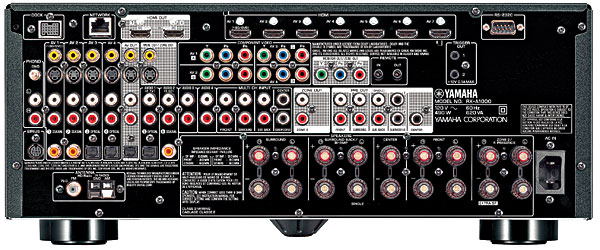
Features common to all Aventage models include hybrid power supplies, which separately feed the digital and analog circuits. All have a fifth foot in what Yamaha calls its Anti-Resonance Technology (A.R.T. ) Wedge design, which is said to improve structural rigidity and reduce vibration for an unspecified improvement in sound quality.
In all cases, Yamaha’s designers were fussy about parts—not merely focusing on specs, but also extensively testing key parts to find those that met the desired characteristics. All Aventage A/V receivers are built in Yamaha-owned factor- ies, not outsourced, and their three-year warranties are 50 percent longer than the com- pany norm.
Aventage starts with the RX-A700 ($650). Like pretty much any AVR we review nowadays, it has lossless surround decoding and 3D-via-HDMI capability (in this case, version 1.4a). Noteworthy features include Sirius satellite radio (with the addition of a $15 antenna), Bluetooth capability (with the addition of the YBA-10 wireless audio receiver, $130), and Made for iPod/iPhone capability (with the addition of the YDS-12 dock, $100; or the YID-W10 wireless dock, $150). All models are iThing-dock-dependent—I advise Yamaha to make the USB jack found on the top three models iCapable for direct plug-in of these mobile devices. Step up to the RX-A800 ($800), and digital over-the-air HD Radio with iTunes tagging sweetens the deal.
Things get really interesting when you get to the RX-A1000 ($1,100), the subject of this review. It adds a free app to turn your iPhone or iPod touch into a Wi-Fi-enabled remote that con- trols input, volume, mute, and other functions—for up to three zones. (Though no apps for iPad or Android just yet.) With the addition of a USB input, you can plug in a flash drive. With Web browser control—via Internet Explorer, Firefox, or Safari, PC or PDA—you can select input, listening mode, presets, and parameters. You can also browse your iPod or USB-connected device. The Yamaha supports the Rhapsody music service and its 11 million songs if you’ve got 10 bucks a month for the subscription fee. It also supports Pandora and Napster via a free firmware update. This model has Network Receiver and DLNA features as well, including Internet radio and the ability to access media from a computer. Why, then, would anyone move up to the previously reviewed RX-A2000? Additional attractions include marquee video processing in the form of HQV Vida, a third zone, macro command capability, and more power, going from the RX-A1000’s 105 watts to the RX-A2000’s 130. The RX-A3000 ($1,900) offers yet more power (140 watts) and a fourth zone.
 Ergonomic Angles
Ergonomic Angles
Aventage models make no attempt to be beauty queens
(and I’m not sure I’d like them better if they did). The front
panel includes a white fluores-
cent display, a source-select knob at left, and a volume knob at right. In between is a large flip-down panel that conceals a full set of navigation controls, HDMI and USB jacks, and numerous other niceties.
The RX-A1000 includes the same attractive onscreen color interface as its siblings, with a control column at left for the main menu items. As you explore each main menu item, a row of controls pops out at the bottom. If you need to look something up in the manual, you’ll have to load a PDF file from a supplied CD. Like a lot of companies these days, Yamaha has gone green in this regard.
One way in which the RX-A1000 differs from the RX-A2000 is that the latter comes with two remote controls, including a smaller one for multizone use. The RX-A1000 comes with only one. It’s simpler than that of the step-up model, with a less differentiated control layout and no flip-down door to conceal less oft-used controls. But it does have one small advantage over the fancier model: With no door, the critical Sur Decode button is more accessible. It’s indispensable for switching listening modes when you’re playing music.
To make sense of an A/V receiver’s many listening options, Yamaha relies heavily on presets that control multiple options. This AVR’s dozen Scene func- tions associate each input with a plethora of listening modes and settings—see the RX-A2000 review for the full laundry list. The Pattern control lets you switch between the automated YPAO microphone-driven setup and your own manual setup—or two different YPAO setups, two different manual setups, etc. I can imagine the hot breath of tweakers fogging up their heavy horn-rimmed spectacles as they read this.
Another way in which Yamaha does business differently is that it never licenses a feature when it can develop its own version. It uses its own YPAO auto setup and room correction, its own dynamic range adjustment, and its own height (“presence”) channels. There’s no Dolby Pro Logic IIz, just IIx; no Audyssey.

